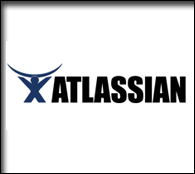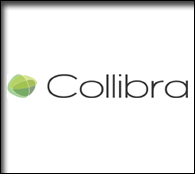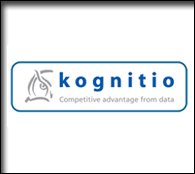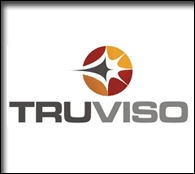Archive for September, 2010
The EI Agenda Takes Shape
by Eric Norlin on Sep.30, 2010, under Uncategorized
Did I mention that Defrag’s Early Bird pricing expires tomorrow?
The Enterprise Irregular Track on the Defrag agenda is starting to take shape. It’s not up on-line just yet, but I wanted to get it posted here asap, so that folks would be able to see it prior to taking advantage of the early bird pricing (that’s expiring tomorrow).
The EI’s are focusing on “Platform Shifts” and the changes that brings. As such, we’ll have
Jeff Nolan on Social Plaform Shifts and Their Impact on Business
Michael Krigsman with a panel discussion on Moving to the Cloud (private, public, hybrid)
Steve Mann on How Go-to-Market Strategies are Impacted by Platform Shifts
Charles Zedlewski on Rethinking the Analytics Platform
Ray Wang on How Social and Platform Trends are Converging to Rearrange Business
Sigurd Riddle on Why Platform Shifts are Irrelevant (Warning: Contrarian Alert!)
…and, for the record, if you type “platform shifts” enough quickly, you eventually miss a critical “F” — resulting in “platform sh…” — well, you get the idea. ![]()
Needless to say, the addition of the EI track to the existing Defrag agenda (getting updated shortly) is amping things up in a BIG WAY. I know it sounds like braggadocio, but I truly believe that you will not find a more insightful two days this fall — I’ll put us up against ANYTHING running, and I hope you’ll come find out why we’re different. Join us.
P.S. Did I mention that Early Bird pricing expires tomorrow? ![]()
The Kauffman Foundation Entrepreneur Scholarship
by Eric Norlin on Sep.28, 2010, under Uncategorized
I’m overjoyed to be able to finally announce something we’ve been working on for a while: The Kauffman Foundation Entrepreneur Scholarship for Defrag.
If you’re not familiar with the Kauffman Foundation, this blurb might help:
“The Ewing Marion Kauffman Foundation was established in the mid-1960s by the late entrepreneur and philanthropist Ewing Marion Kauffman. Based in Kansas City, Missouri, the Kauffman Foundation is among the thirty largest foundations in the United States with an asset base of approximately $2 billion.
Our vision is to foster a society of economically independent individuals who are engaged citizens, contributing to the improvement of their communities. In service of this vision, and in keeping with our founder’s wishes, we focus our grant making and operations on two areas: advancing entrepreneurship and improving the education of children and youth. We carry out our mission through four programmatic areas: Entrepreneurship, Advancing Innovation, Education, and Research and Policy.”
Accordingly, The Kauffman Foundation is going to sponsor fifteen (15) entrepreneur scholarships for Defrag — where the scholarship is a fully paid for conference pass to the conference (i.e., the entrepreneur just needs to get there and find a place to sleep; we’ll feed ‘em for 2 days).
To apply for the sponsorships, you must be A) a technology startup/entrepreneur with a currently operating company (even if it’s just you and your dog; but it should be what you *do*, not a side project) and B) pre-Series A funding. In other words, we want to help those that might not otherwise have a chance to attend Defrag, attend Defrag.
Here’s what you need to do: Send me an email (enorlin AT mac.com) with your name, company website, and a 100 word (no more) explanation of why you should be at Defrag.
We’ll announce the scholarship recipients in a couple of weeks.
Updated: I’d be remiss if I didn’t publicly thank Paul Kedrosky for his help in making this happen. From day 1 of starting Defrag, Paul has generously donated his time, energy and considerable brainpower to helping us succeed. And beyond that, he’s really frickin’ good on stage. Now, we get to add that he has helped facilitate a new relationship that will benefit a bunch of entrepreneurs. So, a big hearty “thank you” to Paul! ![]()
All About the Data
by Eric Norlin on Sep.27, 2010, under Uncategorized
It’s funny how your “pitches” change over time. When we started Defrag four years ago, my pitch (where “pitch” is “describe the show and it’s value”) went off on some tangent about global brainstorming sessions, and building technologies to accelerate the process of insight.
Now, my pitch goes something like this:
“Defrag’s all about the data. No matter what we do technologically (individually or in the enterprise), the end result is that we’re generating data at a greater volume and velocity. Defrag’s about the tools and technologies that help attack that problem-set. As such, Defrag sits at the intersection of topics like BI, enterprise 2.0, social business design, the semantic web, etc.”
Defrag really is the “strategic conversation” piece around all of this, and I think a pretty unique conference experience. And, after you’re done with Defrag, you can hit up Blur to find out about how interfaces are changing in the face of the data deluge, and then Glue to figure out the cloud-API infrastructure that you’ll need in actual implementations. Strangely, they’re like three pieces in the puzzle: strategic planning, on the edge interfaces, in the trenches development.
But first, let’s concentrate on Defrag! This week ends the early bird pricing, and truly, you’re gonna kick yourself if you don’t take advantage of it. Be sure to join us.
It Can’t All Be Game-Changing
by Eric Norlin on Sep.22, 2010, under Uncategorized
Humans have a weakness (it’s actually physiological, I think): a predilection toward narcissism. As such, we always see whatever time we’re living in as THE crucial time in the span of human history (at every point in history, every one has thought that surely THIS is the critical moment). I mean, with global flattening and climate whatever we’re now calling it and the “new normal” economy and peak oil and the creation of the internet and the rise of the super angel and the falling capital cost of software startups, how the hell can we NOT be living at the center of the most critical point in human history? Right?
Let me once again trot out our collective and individual predilection toward narcissism.
All points in history are important, and some points in history are more important than others, but it really is fool-hardy to place yourself at the center of history’s most important point. Actually, it’s a good way to ensure that you’re wrong.
Bottom-line: it can’t ALL be game-changing. If the dotcom boom “changed things” and software as a service changed things and e2.0 changed things and the cloud changes things and super angels change things — basically, everything changes everything else. And, so what?
I’m off on this little bubble-bursting mission this morning because of the whole Bin38/Angelgate thingy.
I have a lot of friends/associates that are in the venture capital/angel investing business. I don’t know ANY of them (not one) that are slimy and successful. The ratio of integrity to success is so high that correlation is a given. That’s all I need to say about that.
Here’s the other side of it: When the conversation is now so firmly focused on “super angels vs. VC’s” and how it’s a “game changer” and the “paradigm has shifted” and we’re “creating a new landscape” — you know that it’s time to get out the hip waders because the river of BS that’s flowing is deep AND wide.
Isn’t this conversation supposed to be about the startups? Aren’t the investors supposed to be in the background helping to make things happen? Isn’t the point to build successful companies not endlessly debate who’s got the bigger….uh, yea….angels or VCs?
When the conversation becomes so deafening and it has nothing to do with what we’re supposed to be talking about, you can know two things:
1. Humans have a predilection toward narcissism (hence, the beginning of this post).
2. There’s some sort of “mini-bubble” dynamic at play, and it’ll all end badly for at least 51% (ie, a majority) of the parties involved.
So, here’s my rant: We’re not all “changing the world,” or creating some new paradigm, or living on the cusp of the greatest moment in history. We’re building solid businesses that deliver on the promises that we make to our customers.
wow.
Oh, by the way, for more unvarnished talk and intimate networking - be sure to join us at Defrag (early bird expires September 30th).
Getting Past Passive
by Eric Norlin on Sep.21, 2010, under Uncategorized
Okay, this is a bit of a rant, but here goes…
I was reading this article this morning, and one sentence stood out: “Peter Drucker once said that ‘the purpose of a business is to create and keep a customer.’”
The purpose of a business is to *create* a customer. As in actively bring to life something that didn’t exist before.
That just stuck in my craw (excuse my southern-ese). How many vendors and startups do we see today that don’t actively CREATE their customer? How often are we told that startups should be “scratching an itch” - with the implication being that it’s a pre-existing itch? How many businesses now view ad words campaigns as their primary marketing engine? How many software companies seek to enter “big markets” once they’ve already been somewhat defined?
In short: how much of the marketing and sales in our technology world is just passive in nature?
Contrast that with Drucker: “the purpose of a business is to create a customer.”
Now let’s go back and look at game changing companies: did Microsoft enter a pre-existing “big market” with personal computers? Was Google entering some huge market known as “search-related ads” when Sergey and Larry created the algorithm? Did Larry Ellison (in the early days of Oracle) depend on waiting around for the leads to come in?
I can’t think of a single case of startup, entrepreneurial or really big business success that was passive in nature. Innovators don’t just scratch a pre-existing itch. They teach people they have an itch that they didn’t even know they had. I never knew I’d become borderline addicted to spewing minutiae in 140 character blocks — until I was shown that I wanted/needed it.
If you’re in the vendor community and you think that passivity is gonna cut it — I’m sorry, you’re just flat out wrong. Sure, you might build a nice, sustainable business (and if that’s all you want, that’s totally cool), but this idea that some how e2.0 and social business is a game changer — well, that ain’t happening in passive mode.
The purpose of business (first) is to create a customer.
Steel Horses, Thorny Roses and Long, Winding Roads
by Eric Norlin on Sep.14, 2010, under Uncategorized
As anyone who knows me knows, I have a borderline obsession with 1980’s hair metal and heavy metal. It was the music of my teenage years: I grew up listening to everyone from Iron Maiden to Bon Jovi, and I watched in absolute horror as my beloved form of music mutated into some kind of over-the-top, me-too, big hair monstrosity on MTV. It got so bad there at the end that what was on MTV actually looked like self-parody, Spinal Tap style (or, in modern parlance, Steel Panther style — warning: way NSFW).
The other day I was thinking about the analogy between what happened to metal in the 80s and the mainstream adoption of enterprise software (yes, I did just write that sentence). Specifically, how in both cases, some bands/software get mainstream adoption and go on to a career of maturity (Bon Jovi), while in other cases, some bands/software get mainstream adoption and go on to become absolutely ridiculous (uh - I dunno - Poison? Winger? Dozens of other metal MTV bands with power ballads from the late 80s). And that made me wonder why…
If you’ll remember, Bon Jovi was big in the 80’s. I mean REALLY big. “On my steel horse I ride” has been forever ingrained in the American psyche, and still rings out loud in clear in Karaoke clubs and cars on the interstate across the fruited plain. On the other hand, a lot of other bands were really big on MTV at the same time. What was the difference? Substance (I’m not sure you can argue “substance” while listening to the “Slippery When Wet” album)? Growth? Luck? A combination of factors?
Similarly, take a look back at enterprise software in the late 90’s. Some of it actually delivered on it’s promises (the lighter weight component of ERP systems, accounting systems, etc), but an awful lot of it resembled the MTV hair metal crap of the late 80’s — overblown self-parody (B2B software exchanges, anyone?).
When we place these two incongruous examples side-by-side, what can we learn (other than that striped, neon spandex and big hair is not a good look)?
1. “Mainstream Adoption” does not mean long-term success: Mainstream adoption can be just as fleeting, just as much a case of crash and burn as short term innovation. Mainstream adoption can make managers and record labels a crapload of money in the short-term, but that really doesn’t mean that your music (software) is gonna be much more than a joke in the long-term. “Mainstream Adoption” is just as often a fad driven by hormonal teenagers (what’s THAT analogy in the enterprise?), as it is a sign of some chasm crossing moment of success. Don’t be fooled, “mainstream adoption” of any enterprise software (e2.0 or otherwise) does not mean long-term success or even long-term meaning for the enterprise.
2. When every album requires a power ballad, things are not good: Remember that? From Autograph to White Lion (or Whitesnake), once Motley Crue took “Home Sweet Home” to number 1, it was just REQUIRED that every metal album have a power ballad that sounded like - you guessed it — Home Sweet Home. Do we see that in enterprise software today? Oh yea. Does any e2.0 suite/platform/solution NOT have some sort of micro-blogging/activity stream function? I give you the e2.0 power ballad. (Note: I’m not picking on activity streams, as I actually think they’re key piece of value.)
3. When those on the edge start getting mimicked by big money - watch out: You know there was a day when metal was just cool. Nobody listened to it. We all had long hair and hung out with the wrong crowd. Albums like Def Lepard’s “High and Dry” or Metallica’s “Kill em all” were actual musical displays of talent. And then some tipping point happened, and the record companies decided they could make some money doing something *just* a bit more “mainstream” — so they threw money at it. Next thing you know: Winger. What do we see today in enterprise software? Let’s just say a lot of big guys suddenly think that collaboration is a hot new space they can sell into, so they’re building stuff.
Okay, you get the negative side….but what about the positive analogies? I mean, metal music from the 80’s did influence and change a lot of things, right?
At least one HUGE mainstream adoption story will grow with the market enough to have a long term career. Love ‘em or hate ‘em, you cannot deny that Bon Jovi’s had one, long, successful career. They did it by moving past the adolescence of “bad medicine” and into some of the more adult (almost country-tinged) topics of “Lost Highway.” The key takeaway here is that Bon Jovi is not still the Bon Jovi of old. They didn’t “stay faithful” to some vision of changing the whole enterprise — they engaged, added value, changed with the times, brought their own voice to the party, and became part of the system. They — wait for it — “sold out” — which is precisely what enterprise software has to do to survive long-term.
Bottom-line: there are *good* kinds of mainstream adoption and *bad* kinds of mainstream adoption, and it’s high-time that we all stop thinking that any mainstream adoption is some sign of goodness and progress, as it’s just as often a sign of an overblown, self-parody that has too much cash being pumped into it. When every album requires a power ballad, and every video has slo-mo footage of hairspray teased hair being blown back by a fan, we’re in trouble, it’s a bubble - RUN the other way. And that may just be where we’re headed with so much of the enterprise 2.0 software of today.
Not that folks won’t make a lot of money in the meantime. They will. But let’s not fool ourselves into thinking that all mainstream adoption in enterprise software is much more than a bad 80’s MTV metal video. Because 8 times out of 10, that’s exactly what it is.
…On my steel horse I ride…
Jeff Ma (”21″ and “The House Advantage”) to Keynote Defrag
by Eric Norlin on Sep.09, 2010, under Uncategorized
Why bury the lead, right?
Big news: Jeff Ma, who was the inspiration for the movie “21″ and the book “Bringing Down the House,” and is the author of the *awesome* new book, “The House Advantage” is coming to keynote Defrag. Besides being a world-famous card counter in the game of blackjack (which he, literally, can no longer play in casinos), Jeff has started several businesses (PROTRADE and Citizen Sports - which sold to Yahoo! in May of this year). Jeff’s current focus is on applying the laws of statistics to business in order to give managers, entrepreneurs and leaders an edge (hence, “The House Advantage”).
Despite my complete incompetence at math, I have a fascination with data and numbers. And, if you put me anywhere near a casino, you’ll soon find me absorbed (for hours on end) playing Craps. Needless to say, Jeff’s pretty much my own personal dream keynoter — and I think once you hear him speak, he’s going to be at the top of your list as well.
If you’ve already registered for Defrag at the discounted “worm” rate — congrats! If you haven’t, then seriously - what are you waiting for?
Oh - and if you think this is the end of the Defrag surprises, think again -and stay tuned.
Defrag: Summit or Conference?
by Eric Norlin on Sep.09, 2010, under Uncategorized
I had a really interesting phone call with Sameer Patel yesterday.
The last couple of times that we spoke Sameer had taken to describing Defrag as a “summit-y feel” or “more of a summit than a conference.” Yesterday, when he said that again, I asked him exactly what he meant by that (and now I’m paraphrasing, with permission, of course).
Sameer’s point is that “conferences” (in his mind) tend to focus on “what’s happening now.” As a result, they end up with a lot of very practical case studies on stage. This, of course, can be a very good thing — as it helps mainstream adopters with their implementation plans. In the “conference” context, putting vendors on stage to speak can be a VERY bad thing, as too often the vendors simply pitch their solution for today’s problem.
“Summits” on the other hand have an entirely different modus operandi. At a summit, you are quite naturally peering into the future, looking at what’s ahead, trying to think strategically about what’s around the corner. To Sameer, this has historically been what Defrag does (he’s been to two Defrag’s now), and I think he’s right. In the summit context, putting vendors on stage isn’t a bad thing, it’s actually a necessary thing. The reason is this: we’re speaking to futures; to things that more often than not, don’t exist in any mainstream sense yet. As such, the people that are working on futures tend to be the visionary vendors.
This is not to say that we want vendors on stage at Defrag pitching their product — quite the opposite. We want visionary innovators on stage helping us figure out what’s over the horizon. Now, of course it’s implied that if the CEO of a startup is speaking broadly to some problem, then it’s most likely that his company addresses it — but that’s precisely WHY they don’t need to get on-stage and pitch.
It’s actually pretty amazing how many times Sameer and I will start talking about a specific company, and then both agree that Defrag really isn’t their ball of wax. Why? Because they’re a vendor that’s focused on a very mainstream problem, and therefore probably not as likely to see the value in being at Defrag. And that’s cool. In fact, I’d have it no other way.
The upside to all of this is this (another point that Sameer made): Where do CTO’s, the guys that wake up every day and fight just to keep things running, go to really get their head above the struggle and think strategically? Where do they go to overcome simply focusing on the implementation of today, and see the possibility of tomorrow? There really isn’t much of a place for them to do that (in an intimate, highly networked fashion) anymore. Or, at the very least, those places are shrinking.
I think Defrag has a toe-hold on getting the CTO that needs two days to see things differently to attend. I know that we’re working to lock that down. If you’re a CTO at an enterprise, and you want to come think about what’s around the corner, I hope that you’ll choose to join us….at Defrag - the summit. ![]()
Update from Sameer: He thinks that “what’s around the corner” is still pretty mainstream and being addressed by other conferences, and that Defrag is much more along the lines of what’s potentially disruptive in the 2-4 year timeframe (something not being addressed by other shows). I’ll defer to his judgement. ![]()
Lowering Risk at Decision Points
by Eric Norlin on Sep.08, 2010, under Uncategorized
I’ve actually got the chance to catch up on a little blog reading this morning, and I just got to digest Sameer Patel’s wonderful post entitled, “Innovation 1.0, served here.” The bit that really hit home was this (emphasis mine):
“By organizations embracing and encouraging innovation, that really doesn’t equate to every factory worker walking off the line and putting on a lab coat. That would no doubt be asinine. Building Innovation cultures come in many flavors (see this by Hutch Carpenter on the many incarnations). It really means opening up the participatory funnel on not only suggesting but more importantly, refining the good ideas and getting the kinks out. In practical terms this means getting the big brains hidden in the corners of your enterprise to contribute unique data points (validation, rebuttals, refinement, oversight) to remove risk and enrichen outcomes.”
That last bit sent me head whirling around a bunch of conversations I’ve been having lately (with everyone from Liz Pearce at Liquid Planner to Nathan Gilliat to Larry Hawes to Jay Goldman over at Rypple). The common thread is this: whether it’s project management, social media tools, feedback management, community management — whatever — what we’re really trying to do isn’t just to create some “emergent atmosphere for collaboration,” it’s to get mechanisms in place that create feedback loops into EVERY SINGLE STEP along the value chain (product management, partner management, channel management, sales management, customer management, etc).
Sameer’s point then is key: by creating feedback loops along the value chain, what we’re actually doing is lowering the risk associated with decision points. And when you can lower the risk of any decision in an appreciable way, and then manage that risk in a unified fasion, what you (theoretically) get is a business that fails less and succeeds more. Bottom-line: you get a business that is more profitable because it makes fewer mistakes.
This tact seems to me to be so much grounded, and oddly, strategic than simply focusing on collaboration. Collaboration is kinda squishy. Creating feedback loops at decision points in the value chain to lower decision-risk — THAT is a goal=foucsed outcome that makes sense. That is something you can sink your teeth into.
It’s this kind of “grounded yet strategic” approach that I’m asking (demanding) from all of the defrag breakout sessions. I think it’s gonna work out well.
As always, join us.
Selling modern software
by Eric Norlin on Sep.07, 2010, under Uncategorized
Some conversational threads are converging today:
1. In a discussion this morning, I talked through two sales models in the “e2.0″ space — one, wherein non-IT people sign up for accounts, and the vendor then approaches IT about signing up for a comprehensive license; one wherein, the vendor uses more traditional enterprise sales methods to sell directly to IT.
2. Then, I commented on Fred Wilson’s blog about “enterprise software” being a contrarian investment. Fred agreed, but added that they won’t invest in anything where “IT is the gatekeeper.”
Taken together, those threads start to point to something interesting: In the past, enterprise software sales has been a top down, “get IT to buy-in” kind of sale. Increasingly — because of open source and SaaS delivery models — enterprise software sales has become a bottom-up, “well, they’re already using it, so we’d better sign a license” kind of sale.
I first began to notice this back when I was starting/running SaaScon- the sponsors didn’t WANT enterprise IT guys there. They weren’t the customers. They wanted line of business decision makers in HR, marketing, sales, whatever.
It also makes me think that the 25 million that it used to take to start an enterprise IT company is dropping because the structure of the sales channel/force is changing - radically.
The funny thing is, I think that — completely inadvertently — a great majority of the Defrag sponsors use the “bottom-up/grassroots” method. And…all of this is making me really look forward to the Enterprise Irregular sessions on the economics of modern software. ![]()









